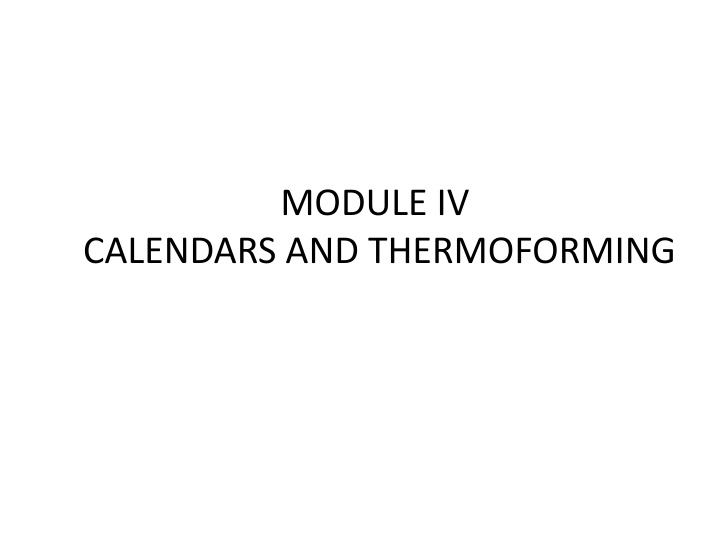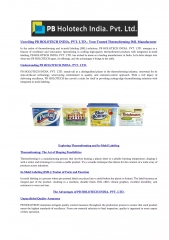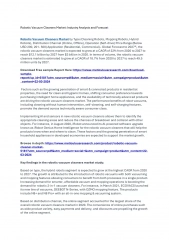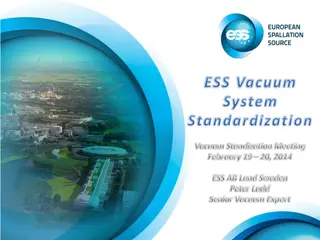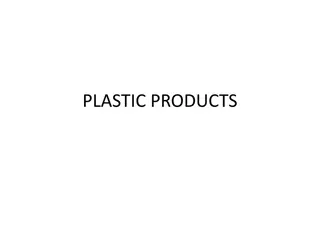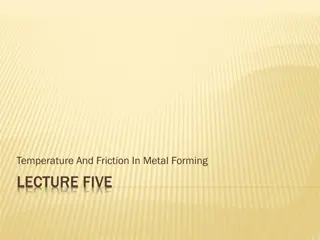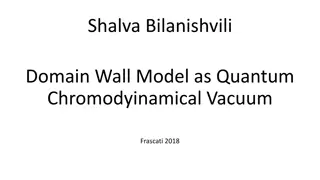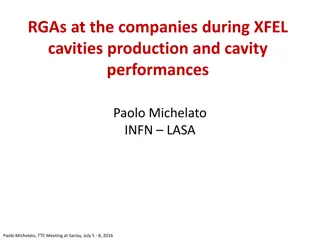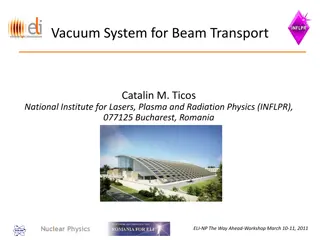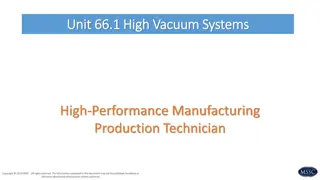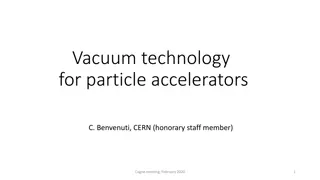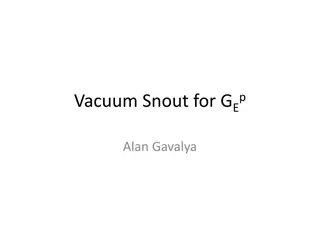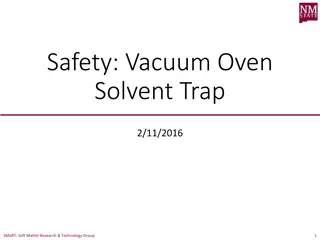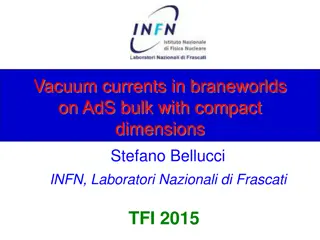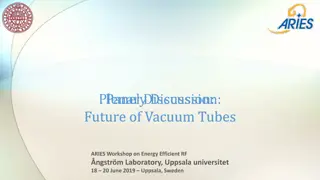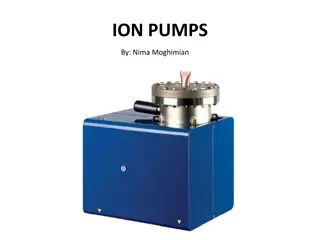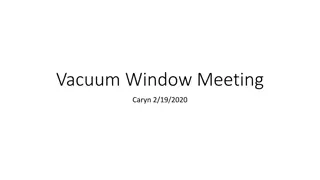Calendars, Thermoforming, and Vacuum Forming Overview
Delve into the world of calendars and thermoforming processes with a focus on calendaring mechanisms, profile calendaring, gauge compensation techniques, spreading processes, and thermoforming methods such as vacuum forming, pressure forming, and plug-assisted forming. Explore the applications, advantages, and disadvantages of thermoforming, along with a detailed explanation of the thermoforming process and vacuum thermoforming technique.
Download Presentation

Please find below an Image/Link to download the presentation.
The content on the website is provided AS IS for your information and personal use only. It may not be sold, licensed, or shared on other websites without obtaining consent from the author.If you encounter any issues during the download, it is possible that the publisher has removed the file from their server.
You are allowed to download the files provided on this website for personal or commercial use, subject to the condition that they are used lawfully. All files are the property of their respective owners.
The content on the website is provided AS IS for your information and personal use only. It may not be sold, licensed, or shared on other websites without obtaining consent from the author.
E N D
Presentation Transcript
MODULE IV CALENDARS AND THERMOFORMING
To understand the working principles , parts and accessories of calendars 4.1.1. Define calendaring process. 4.1.2. Give the different calendar configurations. 4.1.3. Explain the different part, and accessories of calendars. 4.1.4. Define profile calendaring. 4.1.5. Compare calendars with profile calendars. 4.1.6. Explain gauge compensation techniques like roll cambering (crowning), roll crossing and roll bending. 4.1.7. Explain spreading process. 4.1.8. Explain the parts, working and features of spreading machine. 4.1.9. Define thermoforming. 4.1.10. Explain the principle and process of vacuum forming, pressure forming and plug assisted forming. 4.1.11. Give examples of thermoformed products.
THERMOFORMING Process of heating a thermoplastic sheet to its softening point and deformed it into desired shape. The process involves: Heating plastic sheet to the temperature where in softens Stretching the softening polymer against a cold mould surface Cooling the finished part and trimming excess plastics Applications : Packaging of consumer products, bathtubs, contoured sky lights, interior door liners for refrigerators
Advantages and Disadvantages of thermoforming Advantages Flexible design High production rate Low set up cost Low mould cost Rapid prototype development Low temperature requirement Disadvantages Not eligible for thermosets All parts needs to be trimmed Non uniform thickness for the parts Higher scrap Limited part shapes Internal stresses common
Thermoforming Process The thermoplastic sheet is clamped into a holding device and heated using radiant electrical heater until it is softened The sheet is then held horizontally over a mould using vacuum pressure, air pressure or mechanical force The softened sheet conforms to the shape of the mould and is held in place until it cools
Vacuum Thermoforming Flat plastic sheet is softened by heating Softened plastic sheet is placed over a concave mould cavity Vacuum draws (pressure 14 psi) the sheet into the cavity Plastic hardens on contact with mould surface Part removed and trimmed off.
Pressure Thermoforming Pressure forming is a thermoforming process that heats a plastic sheet until it becomes pliable and then presses it against a mould. To achieve this pressing action, air is removed or vacuumed-out from below the plastic sheet. At the same time, air pressure (50-100 psi) is applied above the plastic sheet. Once a pressure formed part is cooled, the part retains the shape of the mould. Vent holes provided in the mould to exhaust trapped air
Plug assisted forming Plug assist thermoforming is one of the most process variants for thermoforming industry. Its purpose is to pre-stretch the heated polymer sheet prior to the application of pressure and/or vacuum during the final part formation. Just as the softened material can be forced into the mould by positive air pressure as is done in pressure forming, it can be forced downward by mechanical pressure. In this type of forming, a plug is used to force the material into the mould. Generally the plug will not push the material completely into the mould but, rather, only part way to positive seating. A pressure is then applied to draw the material against the cavity walls and complete the forming operation.
Plug assisted forming The major advantage of plug-assist forming is that it gives a better wall thickness uniformity than can be obtained by other forming processes, especially for conical cup or box shapes.
SPREADING PROCESS Coating of fabrics with rubber can be done either by calendaring or by a spreading technique. In the spreading process, the rubber compound is dissolved in a suitable solvent to achieve the form of dough. When calendaring the total thickness of the coating is normally made in one pass in the machine but by spreading it is common to build up the total thickness by several passes and drying, evaporation of the solvent- between each pass. Spreading is mostly used for high quality products as protective clothing for chemical industry, fire brigades and military purpose, coated fabrics for production of inflatable products and sheets for offset printing.
SPREADING PROCESS The dough used has normally a dry content of about 50 - 60 % and the rest is solvents Chlorinated solvents have to be avoided due to health and environmental reasons.
The spreading machine consists of : let-off roll spreading part with a doctor knife drying zone with steam heated plates take up roll
The dry and smooth fabric is fed over the driven roller under the knife. The rubber in form of the dough is placed in front of the knife with a ladle or scoop The machine is started at a low speed. The combined effect of the forward motion of the fabric and the obstacle from the fixed knife gives the dough a rotary movement in the direction of breadth of the machine. The fabric will obtain a coating of the dough and the thickness of the coating is determined by the position of the knife. The coated fabric then passes over a steam heated table, the temperature of which is gradually increased from entry to exit point. The dried coated fabric is then collected from the take off roll. The amount of dry rubber per pass is between 10 and 40 g/m2 .
CALENDERING Calendering is a process where rubber compound is formed to a continuous sheet or coated on a fabric. This is done by feeding the rubber compound to one or several on each other following roll gaps. Calenders are generally distinguished by the number of rolls installe d in the calender frame and by their geometrical arrangement. For the processing of rubber compounds, calenders with two to four rolls are primarily used.
Two rolls built together in a frame, forms one gap and is called a two-roll calender. Three rolls forms two gaps and is called three-roll calender. Four rolls forms three gaps and is called four-roll calender.
Calendering is used in the manufacturing of a multitude of products either for rubber coatings of fabrics or for the preparation of sheet products. Sheets up to 2 mm thickness can be produced without air inclusions. For thicker sheets a combination of an extruder and a calendar is used, so called roller head calendar. In a calender the rolls are mounted in a frame made of cast iron with high tensile strength. The rolls have a diameter from around 200 to 750 mm and face length from 250 to 2 500 mm (the smallest are laboratory calenders) and are manufactured for highest concentricity, resistance to deformation and with high quality surface finish. To allow a good temperature control the modern calenders have peripherally drilled passages for heating or cooling
Calendar consists of a roller, revolve in opposite directions, a bearing, a frame, a base, a distance adjusting device, a transmission and an auxiliary device, and the roller is its main working component. Calendaring processes rubber by forcing the material softened by heat into the centre of two to five counter-rotating rollers. The rollers compact the sheet as it passes through them. The thickness of the resulting product gets determined by the gap between the cylinders, called the nip region. After that the sheet passes over cooling rollers and is often spooled as a finished product.
ROLL DEFLECTION AND METHODS OF CORRECTION During calendering, enormous forces are generated by the compound while passing through the nip. These forces are capable of lifting such heavy rolls thereby causing variation in the gauges. In a Calender, due to force generated the rolls will distort and the gauge in the centre will be higher that at the edges. In order to compensate for this deflection, different methods have been developed.
Roll camber (roll crown) To compensate this, the rolls were ground with varying diameter from centre to the sides The diameter being more in the centre and less in the sides. This is called CROWNING During calendering, the force generated by the compound bends the roll, more in the centre than in the sides With the crowing in place, the net result will be a sheet of uniform gauge
Roll bending Two additional bearings are provided in the rolls in addition to the regular taper bearings. A Hydraulic cylinder is connected to these bearings. Hydraulic force is applied to the bearings and the rolls are deflected forcibly. This deflection will be opposite in direction to the deflection caused by the compound and hence they compensate the outward deflection produced at the centre. With this method, continuously variable compensation can also be obtained
Roll crossing or skewing Roll crossing is accomplished by tilting the plane of axis of one of two adjoining rolls in relation to the common plane axis of the two. Mechanical screws, hydraulic systems and sliding wedges are being used. The rolls on either side of the film forming nips are crossed for eg., Rolls 1 and 4 of a 4 roll Calender Crossing the rolls slightly, thus increasing the nip of opening at either end of the rolls
